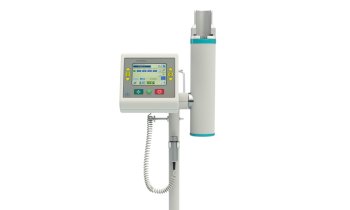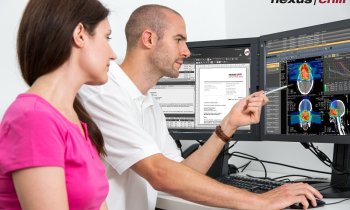CT use increases for CAD diagnosis
Mark Nicholls reports from Vienna
Computed tomography (CT) has become central to the diagnosis and characterisation of coronary artery disease (CAD) and, in the future, could even supplant invasive coronary angiography as the technology increases sensitivity.

In the UK, for lower-risk patients with chest pain the first line of testing is already a calcium score – a CT examination to check for the build-up of calcium in plaque within coronary arteries. Cardiac imaging: from diagnosis to prognosis, was the theme of a Special Focus Session at ECR 2012 in March, chaired by Michael Rees, Professor of Cardiovascular Studies at the School of Medical Science, Bangor University Wales. ‘Cardiac imaging,’ he pointed out, ‘has come a long way, particularly in the last 15 years, with huge strides having been made. In the UK, new guidelines for patient care mean that, with patient history, we can now stratify patients according to risk – low, medium or high – and usually on the basis of their symptoms, and the treadmill test is now being replaced by calcium screening for low-risk patients as the first line of investigation.’
CT use increases for CAD diagnosis Mark Nicholls reports from Vienna In symptomatic patients, she reported that calcium scoring and ischemia testing has shown to be effective predictors of future events but that there was less agreement on the value of calcium testing in symptomatic patients, but it does improve prognosis assessment compared to ischemia testing alone. The absence of coronary calcium also makes the risk of coronary events in future years very unlikely, both in asymptomatic individuals and in symptomatic patients. Professor Filippo Cademartiri (Head of Cardiovascular Imaging at Giovanni XXIII Hospital of Monastier di Treviso, Italy) said CCTA has the potential to predict cardiovascular events better than conventional methods and that it can provide incremental prognostic information. CTCA, he said, may become a valid tool for Rozemarijn Vliegenthart patients was found to be ‘far superior’ to other risk factor scores and that the predictability increased when calcium score was added to risk factors, which often saw the patients placed in a better category for risk, Dr Vliegenthart explained, though adding that further analysis is needed to see if calcium scoring is cost effective and for which groups.
Additionally in the UK, recent publication of National Institute for Health and Clinical Excellence (NICE) guidelines on treating patients with chest pain shows the prominent role played by imaging modalities. ‘This is very interesting because, for the first time, it incorporates imaging tests into the patient diagnostic pathway,’ said Prof. Rees. The calcium score represented a big change in the way patients are investigated, he added
If the calcium score is high, the patient will go on to have either a coronary CT angiogram (CCTA) or an invasive coronary angiogram. Low score patients may have CCTA or other tests, or be treated with medication.
The future looks very good in terms of imaging, ‘not only with directing therapy but with monitoring therapy as it happens,’ he said. Dr Rozemarijn Vliegenthart (Radiology Department, Groningen University Medical Centre, the Netherlands) said that, in asymptomatic individuals, risk factors are not sufficient to predict who is at high risk of coronary events. ‘There will be a shift to biomarkers and other measures of atherosclerosis in the heart, but coronary calcium screening by CT is the only noninvasive method of atherosclerosis in the heart itself,’ she said. The predictive power of calcium screening for asymptomatic patients was found to be ‘far superior’ to other risk factor scores and that the predictability increased when calcium score was added to risk factors, which often saw the patients placed in a better category for risk, Dr Vliegenthart explained, though adding that further analysis is needed to see if calcium scoring is cost effective and for which groups.
In symptomatic patients, she reported that calcium scoring and ischemia testing has shown to be effective predictors of future events but that there was less agreement on the value of calcium testing in symptomatic patients, but it does improve prognosis assessment compared to ischemia testing alone. The absence of coronary calcium also makes the risk of coronary events in future years very unlikely, both in asymptomatic individuals and in symptomatic patients.
Professor Filippo Cademartiri (Head of Cardiovascular Imaging at Giovanni XXIII Hospital of Monastier di Treviso, Italy) said CCTA has the potential to predict cardiovascular events better than conventional methods and that it can provide incremental prognostic information. CTCA, he said, may become a valid tool for assigning patients to different treatment strategies. Significant advances have also been made in MRI with stress MRI scans and late contrast enhanced scans becoming more common as a test for medium-risk patients. Dr Jan Bogaert (University Hospital Leuven) outlined the role of MRI predictors in CAD and said that MRI has an increasingly important diagnostic and prognostic role to play.
05.05.2012











